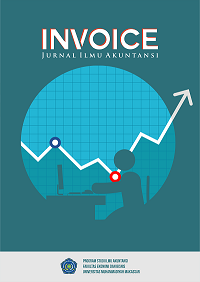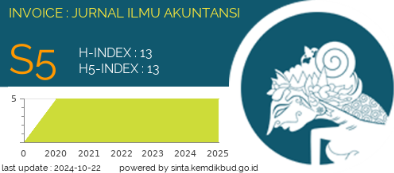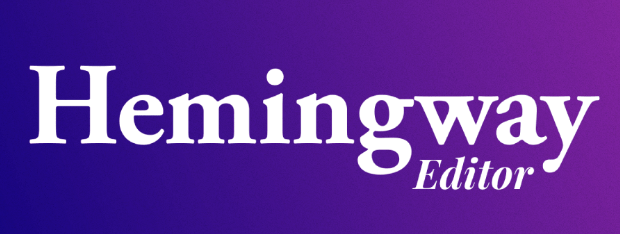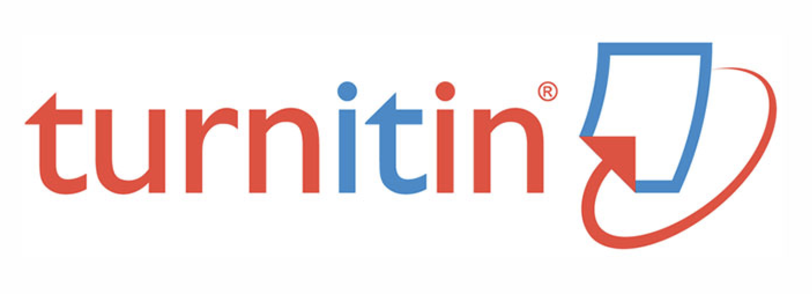Determinants of Capital Structure: Evidence from Non-Financial Companies Listed on the Indonesia Stock Exchange
DOI: https://doi.org/10.26618/inv.v5i2.10556
Abstract
This research is aimed to analyze the effect of effective tax rate, firm size, liquidity, financial flexibility, asset structure, growth opportunities, risk, profitability, asset utilization ratio, and ownership structure on capital structure. The theory used in this research is trade-off theory and pecking order theory. The data source in this research is the annual financial reports of non-financial companies listed on the Indonesia Stock Exchange (IDX) for the period 2017-2020. The sample selected using purposive sampling method. The results of this research indicate that the effective tax rate has a negative and insignificant effect on capital structure. Firm size, asset structure, and growth opportunities have a significant positive effect on capital structure. Liquidity, financial flexibility, profitability, and electoral structure have a significant negative effect on capital structure. Risk and asset utilization ratio have positive and insignificant effect on capital structure.References
Abor, J. (2005). The Effect of Capital Structure on Profitability: An Empirical Analysis of Listed Firms in Ghana. The Journal of Risk Finance, 6(5), 438–445.
Alipour, M., Mohammadi, M. F., & Derakhshan, H. (2015). Determinants of Capital Structure: An Empirical Study of Firms in Iran. International Journal of Law and Management, 57(1), 53–83.
Al‐Sakran, S. A. (2001). Leverage Determinants in the Absence of Corporate Tax System: The Case of Non‐Financial Publicly Traded Corporations in Saudi Arabia. Managerial Finance, 27(10/11), 58–86.
Alzomaia, T. S. (2014). Capital Structure Determinants of Publicly Listed Companies in Saudi Arabia. The International Journal of Business and Finance Research, 8(2), 1-13.
Amidu, M. (2007). Determinants of Capital Structure of Banks in Ghana: An Empirical Approach. Baltic Journal of Management, 2(1), 67–79.
Ananto, M. (2015). Pengaruh Profitabilitas, Kepemilikan Institusional, Growth Opportunity dan Likuiditas terhadap Struktur Modal pada Perusahaan Manufaktur yang Terdaftar di Bursa Efek Indonesia. Universitas Negeri Yogyakarta.
Andika, I. K. R., & Sedana, I. B. P. (2019). Pengaruh Profitabilitas, Struktur Aktiva, dan Ukuran Perusahaan terhadap Struktur Modal. E-Jurnal Manajemen, 8(9), 5803-5824.
Antoniou, A., Guney, Y., & Paudyal, K. (2008). The Determinants of Capital Structure: Capital Market-Oriented Versus Bank-Oriented Institutions. Journal of Financial and Quantitative Analysis, 43(1), 59-92.
Aunalal, A. (2011). Pengaruh Size, Profitability dan Ownership Structure sebagai Faktor-Faktor yang Mempengaruhi Effective Tax Rate Perusahaan (Studi pada Perusahaan di Indonesia) (Doctoral Dissertation, Universitas Gadjah Mada).
Aurelia, L., & Setijaningsih, H. T. (2020). Analisis Pengaruh Struktur Aset, Pertumbuhan Aset, dan Ukuran Perusahaan terhadap Struktur Modal. Jurnal Paradigma Akuntansi, 2(2), 801-807.
Batubara, R. A. P., Topowijono, T., & ZA, Z. Z. Z. (2017). Pengaruh Struktur Aktiva, Ukuran Perusahaan, dan Profitabilitas terhadap Struktur Modal (Studi pada Perusahaan Makanan dan Minuman yang Terdaftar di Bursa Efek Indonesia Tahun 2012-2015) (Doctoral Dissertation, Brawijaya University).
Bevan, A. A., & Danbolt, J. (2002). Capital Structure and Its Determinants in the UK- a Decompositional Analysis. Applied Financial Economics, 12(3), 159-170.
Bouallegui, I. (2006). Capital Structure Determinants and the New High-Tech Firms: The Critical Distinction between Fixed and Random Effects through a Static Panel Data Investigation. Munich Personal RePEc Archive.
Brigham, E. F., & Houston, J. F. (2019). Fundamentals of Financial Management 15th.
Byoun, S. (2008). How and When Do Firms Adjust Their Capital Structures Toward Targets? The Journal of Finance, 63(6), 3069-3096.
Cassar, G., & Holmes, S. (2003). Capital Structure and Financing of SMEs: Australian Evidence. Accounting & Finance, 43(2), 123-147.
Castanias, R. (1983). Bankruptcy Risk and Optimal Capital Structure. The Journal of Finance, 38(5), 1617-1635.
Chandra, T. (2014). Faktor-Faktor yang Mempengaruhi Struktur Modal pada Perusahaan Properti dan Real Estate di Indonesia Ekuitas. Jurnal Ekonomi dan Keuangan, 18(4), 507-523.
Chen, J., & Strange, R. (2005). The Determinants of Capital Structure: Evidence from Chinese Listed Companies. Economic Change and Restructuring, 38(1), 11-35.
DeAngelo, H., & Masulis, R. W. (1980). Optimal Capital Structure Under Corporate and Personal Taxation. Journal of Financial Economics, 8(1), 3-29.
Deesomsak, R., Paudyal, K., & Pescetto, G. (2004). The Determinants of Capital Structure: Evidence from the Asia Pacific Region. Journal of Multinational Financial Management, 14(4-5), 387-405.
Deviani, M., & Sudjarni, L. (2018). Pengaruh Tingkat Pertumbuhan, Struktur Aktiva, Profitabilitas, dan Likuiditas terhadap Struktur Modal Perusahaan Pertambangan di BEI. E-Jurnal Manajemen, 7(3), 1222 – 1254.
Dewi, N., & Dana, I. (2017). Pengaruh Growth Opportunity, Likuiditas, Non-Debt Tax Shield dan Fixed Asset Ratio terhadap Struktur Modal. E-Jurnal Manajemen, 6(2), 772-801.
Dimitri, M., & Sumani, S. (2014). Analisis Pengaruh Likuiditas, Profitabilitas, Ukuran, Usia dan Pertumbuhan Perusahaan terhadap Struktur Modal. Jurnal Manajemen, 11(1), 76-98.
Eldomiaty, T. I. (2007). Determinants of Corporate Capital Structure: Evidence from an Emerging Economy. International Journal of Commerce and Management, 17(1/2), 25-43.
Eldomiaty, T. I., & Azim, M. H. (2008). The Dynamics of Capital Structure and Heterogeneous Systematic Risk Classes in Egypt. International Journal of Emerging Markets, 3(1), 7-37. https://doi.org/10.1108/17468800810849204
Ezeoha, A. E. (2011). Firm Versus Industry Financing Structures in Nigeria. African Journal of Economic and Management Studies, 2(1), 42-55. https://doi.org/10.1108/20400701111110768
Fitriyah, F. K., & Hidayat, D. (2011). Pengaruh Kepemilikan Institusional, Set Kesempatan Investasi dan Arus Kas Bebas Terhadap Utang. Media Riset Akuntansi, 1(1), 31-75.
Gharaibeh, A. M. O. (2015). The Determinants of Capital Structure: Empirical Evidence from Kuwait. European Journal of Business, Economics and Accountancy, 3(6), 1-25.
Gitman, L. J., & Zutter, C. J. (2015). Principles of Managerial Finance.14th Edition. Global Edition. Pearson Education Limited.
Graham, J. R. (1996). Debt and the Marginal Tax Rate. Journal of Financial Economics, 41(1), 41-73.
Graham, J. R., & Harvey, C. R. (2001). The Theory and Practice of Corporate Finance: Evidence from the Field. Journal of Financial Economics, 60(2-3), 187-243.
Heshmati, A. (2001). The Dynamics of Capital Structure: Evidence From Swedish Micro and Small Firms. SSE/EFI Working Paper Series in Economics and Finance 0440, Stockholm School of Economics.
Huang, G., & Song, F. M. (2006). The Determinants Of Capital Structure: Evidence from China. China Economic Review, 17(1), 14-36.
Jamaludin, J. (2020). Pengaruh Current Ratio (CR) dan Total Assets Turn Over (TATO) terhadap Struktur Modal pada PT. Unilever Indonesia, Tbk. Jurnal Ilmiah Manajemen Forkamma, 4(1).
Jermias, J. (2008). The Relative Influence of Competitive Intensity and Business Strategy on the Relationship Between Financial Leverage and Performance. The British Accounting Review, 40(1), 71-86.
Karadeniz, E., Kandir, S. Y., Balcilar, M., & Onal, Y. B. (2009). Determinants of Capital Structure: Evidence from Turkish Lodging Companies. International Journal of Contemporary Hospitality Management.
Kartika, I., & Dana, I. (2015). Analisis Pengaruh Profitabilitas, Likuiditas, Ukuran Perusahaan, dan Tingkat Pertumbuhan terhadap Struktur Modal Perusahaan Food and Beverages yang Terdaftar di Bursa Efek Indonesia. E-Jurnal Manajemen, 4(3), 606-625.
Kasmir. (2014). Analisis Laporan Keuangan. Jakarta: Rajawali Pers.
Khémiri, W., & Noubbigh, H. (2018). Determinants of Capital Structure: Evidence from Sub-Saharan African Firms. The Quarterly Review of Economics and Finance, 70, 150–159.
Margaretha, F., & Ginting, K. R. (2016). Faktor-Faktor yang Mempengaruhi Struktur Modal pada Perusahaan BUMN di Indonesia. Jurnal Ekonomi Universitas Esa Unggul, 7(01), 77872.
Meutia, T. (2016). Pengaruh Growth Opportunity, Profitabilitas, dan Ukuran
Perusahaan terhadap Struktur Modal pada Perusahaan Properti di Bursa
Efek Indonesia. Jurnal Manajemen Dan Keuangan, 5(2), 555-565.
Mohammadzadeh, M., Rahimi, F., Rahimi, F., Aarabi, S. M., & Salamzadeh, J. (2013). The Effect of Capital Structure on the Profitability of Pharmaceutical Companies the Case of Iran. Iranian Journal of Pharmaceutical Research: IJPR, 12(3), 573-577.
Munafi’ah, I., Suprijanto, A., & Hartono, H. (2017). Pengaruh Profitabilitas, Likuiditas, Ukuran Perusahaan, Pertumbuhan Penjualan, Struktur Aktiva dan Risiko Bisnis terhadap Struktur Modal (pada Perusahaan Manufaktur Sektor Industri Barang Konsumsi yang Terdaftar di BEI Tahun 2011-2015). Journal of Accounting, 3(3), 1-21.
Munawir. (2010). Analisa Laporan Keuangan. Yogyakarta: Liberty.
Murti, A. P., Achsani, N. A., & Andati, T. (2016). Faktor-Faktor yang Mempengaruhi Fleksibilitas Keuangan (Studi Kasus pada Perusahaan yang Terdaftar pada Bursa Efek Indonesia (Periode 2008-2012)). Jurnal Aplikasi Manajemen, 14(3), 499-514.
Myers, S. C., & Majluf, N. S. (1984). Corporate Financing and Investment Decisions When Firms Have Information that Investors Do Not Have. Journal of Financial Economics, 13(2), 187-221.
Myers, S. C., & Rajan, R. G. (1998). The Paradox of Liquidity. The Quarterly Journal of Economics, 113(3), 733-771.
Nasir, A., Junita, M., & Ilham, E. (2014). Pengaruh Profitabilitas, Pertumbuhan Aset, Operating Leverage, dan Ukuran Perusahaan terhadap Struktur Modal Studi Empiris pada Perusahaan Food and Beverages yang Terdaftar di Bursa Efek Indonesia periode 2010-2012 (Doctoral Dissertation, Riau University).
Noviandini, N., & Welas, W. (2017). Pengaruh Current Ratio, Return on Asset dan Total Asset Turnover terhadap Struktur Modal pada Perusahaan Publik Sub Sektor Makanan dan Minuman Periode 2011-2015. Jurnal Akuntansi dan Keuangan, 6(1), 1-19.
Nugroho, N. C. (2014). Analisis Pengaruh Profitabilitas, Pertumbuhan Penjualan, Ukuran Perusahaan dan Umur Perusahaan terhadap Struktur Modal Usaha Mikro Kecil dan Menengah Kerajinan Kuningan di Kabupaten Pati. Management Analysis Journal, 3(2), 1-5.
Ooi, J. (1999). The Determinants of Capital Structure Evidence on UK Property Companies. Journal of Property Investment & Finance, 17(5), 464-480.
Pramukti, A. (2019). Faktor-Faktor yang Mempengaruhi Struktur Modal Perusahaan. ATESTASI: Jurnal Ilmiah Akuntansi, 2(1), 58-67.
Primantara, A., & Dewi, M. (2016). Pengaruh Likuiditas, Profitabilitas, Risiko Bisnis, Ukuran Perusahaan, dan Pajak Terhadap Struktur Modal. E-Jurnal Manajemen, 5(5), 2696-2726.
Rahman, A., & Siregar, B. (2012). Faktor-Faktor yang Mempengaruhi Kecenderungan Penerimaan Opini Audit Going Concern pada Perusahaan Manufaktur yang Terdaftar di Bursa Efek Indonesia. Simposium Nasional Akuntansi XV Banjarmasin, 20-23.
Rapp, M. S., Schmid, T., & Urban, D. (2014). The Value of Financial Flexibility and Corporate Financial Policy. Journal of Corporate Finance, 29, 288-302.
Sari, A. N., & Oetomo, H. W. (2016). Pengaruh Profitabilitas, Likuiditas, Pertumbuhan Aset dan Ukuran Perusahaan terhadap Struktur Modal. Jurnal Ilmu dan Riset Manajemen (JIRM), 5(4), 1-18.
Seftianne, S., & Handayani, R. (2011). Faktor-Faktor yang Mempengaruhi Struktur Modal pada Perusahaan Publik Sektor Manufaktur. Jurnal Bisnis dan Akuntansi, 13(1), 39-56.
Sofat, R., & Singh, S. (2017). Determinants of Capital Structure: an Empirical Study of Manufacturing Firms in India. International Journal of Law and Management, 59(6), 1029-1045.
Sutrisno. (2012). Manajemen Keuangan Teori, Konsep dan Aplikasi. Yogyakarta: EKONISIA.
Tarjo. (2008). Pengaruh Konsentrasi Kepemilikan Institusional dan Leverage terhadap Manajemen Laba, Nilai Pemegang Saham, serta Cost of Equity Capital. Simposium Nasional Akuntansi XI Pontianak
Titman, S., & Wessels, R. (1988). The Determinants of Capital Structure Choice. The Journal of Finance, 43(1), 1-19.
Uddin, N. (2015). Determinants of Corporate Capital Structure: a Theoretical Integration and Some Empirical Evidences. International Journal of Economics and Finance, 7(7), 254-277.
Viviani, J. L. (2008). Capital Structure Determinants: an Empirical Study of French Companies in the Wine Industry. International Journal of Wine Business Research, 20(2), 171-194.
Wahidahwati, W. (2002). Pengaruh Kepemilikan Manajerial dan Kepemilikan Institusional pada Kebijakan Utang Perusahaan: Sebuah Perspektif Theory Agency. The Indonesian Journal of Accounting Research, 5(1). http://doi.org/10.33312/ijar.67
Wardhana, I. B. J., & Mawardi, W. (2016). Analisis Pengaruh Struktur Aktiva, Asset Turnover, Growth terhadap Profitability melalui Variabel Capital Structure sebagai Variabel Intervening (Studi Kasus pada Perusahaan Consumer Goods BEI Periode Tahun 2012-2014). Diponegoro Journal of Management, 5(2), 498-511.
Widayanti, L., Triaryati, N., & Abundanti, N. (2016). Pengaruh Profitabilitas, Tingkat Pertumbuhan Perusahaan, Likuiditas, dan Pajak terhadap Struktur Modal pada Sektor Pariwisata. E-Jurnal Manajemen, 5(6), 3761-3793.
Wijayannti, R. A., & Nurlaela, S. (2018). Pengaruh Likuiditas, Profitabilitas, Firm Size dan Growth terhadap Struktur Modal pada Perusahaan Kimia dan Farmasi, Jurnal Ekonomi Paradigma 19(2), 113-122.
Wild, J. J., & Subramanyam, K. R. (2009). Financial Statement Analysis. New York: McGraw-Hill Companies, Inc.
Wimelda, L., & Marlinah, A. (2013). Variabel-Variabel yang Mempengaruhi Struktur Modal pada Perusahaan Publik Sektor Non Keuangan. Media Bisnis, 5(3), 200-213.
Yeniatie, Y., & Destriana, N. (2010). Faktor-Faktor yang Mempengaruhi Kebijakan Hutang pada Perusahaan Non Keuangan yang Terdaftar di Bursa Efek Indonesia. Jurnal Bisnis dan Akuntansi, 12(1), 1-16.
Zimmerman, J. L. (1983). Taxes and Firm Size. Journal of Accounting and Economics, 5, 119-149.
Downloads
Published
Issue
Section
License
Authors who publish with Invoice: Jurnal Ilmu Akuntansi agree to the following terms:
-
Copyright Ownership
The copyright of all articles published in this journal remains with the author(s). However, the authors grant Invoice: Jurnal Ilmu Akuntansi the right of first publication with the work simultaneously licensed under a Creative Commons Attribution 4.0 International License (CC BY 4.0). This license allows others to share, copy, redistribute, adapt, and build upon the work for any purpose, even commercially, as long as proper credit is given to the original author(s) and the source. -
Licensing and Access
Invoice: Jurnal Ilmu Akuntansi provides immediate open access to its content on the principle that making research freely available to the public supports a greater global exchange of knowledge. All published materials are available freely without subscription or payment and can be accessed, downloaded, and reused by any user provided that appropriate attribution is given. -
Permission for Reuse
For uses not covered by the CC BY 4.0 license, such as commercial reprints, translations, or any form of adaptation without clear attribution, users must obtain written permission from the editorial team. Requests for such permissions can be directed to the editorial office at: [invoice@unismuh.ac.id]. -
Plagiarism and Originality
Authors are responsible for the originality of their submissions. All articles are screened for plagiarism using appropriate tools before acceptance. Manuscripts found to contain unoriginal content or infringing materials will be rejected or retracted as per journal policy.














